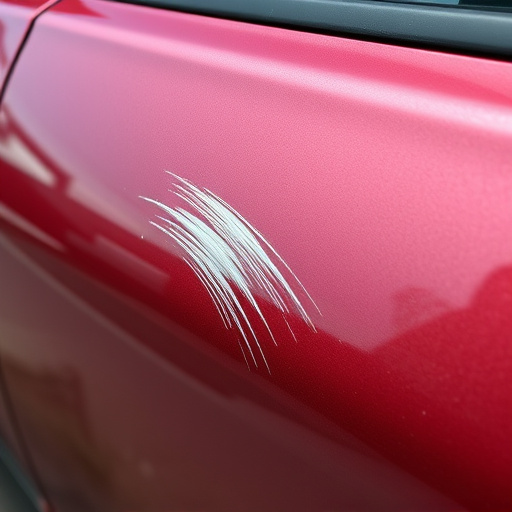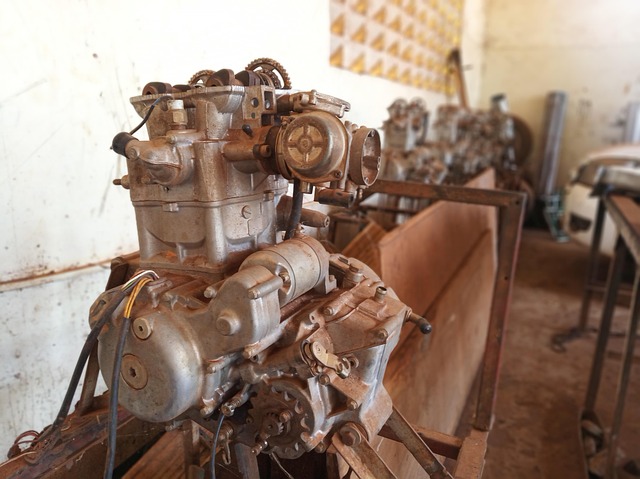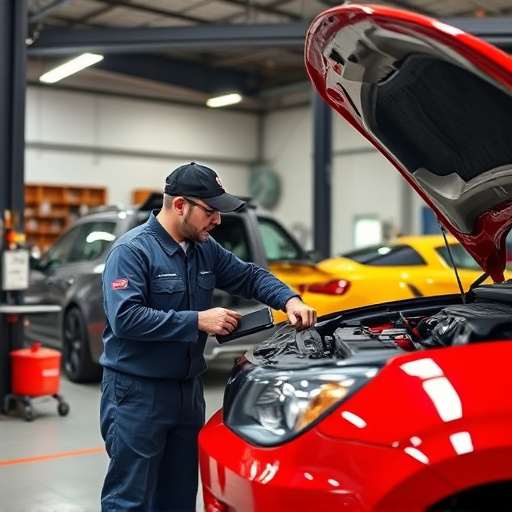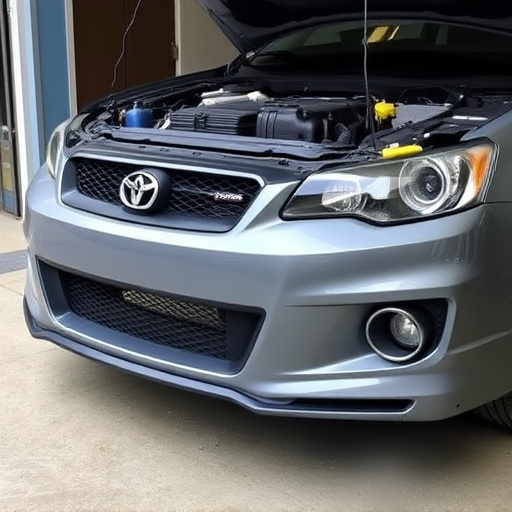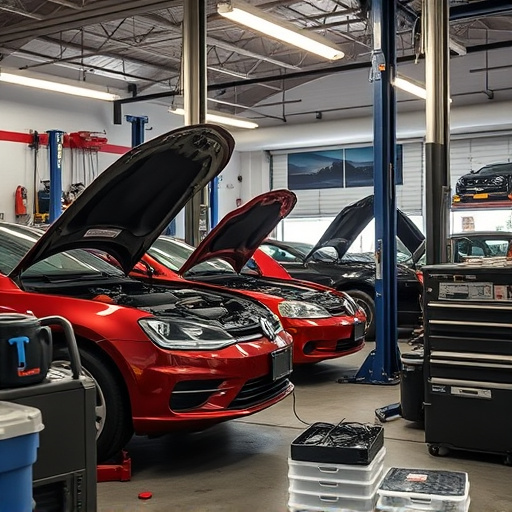Suspension repair collisions are a significant challenge in fleet maintenance, caused by factors like poor road conditions, outdated vehicles, and incorrect tire pressure. Regular inspections, proactive maintenance, and timely repairs are key to mitigating risks. Implementing structured maintenance protocols, including advanced diagnostics and expert training, extends suspension lifespans, enhances vehicle performance, and reduces costs. Tracking metrics like repair time and incident frequency allows managers to optimize programs, minimize downtime, and lower overall maintenance expenses.
In the dynamic landscape of fleet management, efficient maintenance programs are pivotal. One often overlooked yet critical aspect is suspension repair collision, which can significantly impact vehicle safety and operational efficiency. This article delves into understanding the common causes behind these collisions, offering insights on implementing robust fleet maintenance protocols tailored for suspensions. We explore strategies to enhance repair efficiency while emphasizing cost savings, providing a comprehensive guide to optimizing your fleet’s performance and safety through strategic suspension management.
- Understanding Common Suspension Repair Collision Causes
- Implementing Efficient Fleet Maintenance Protocols for Suspenders
- Measuring Success: Tracking Repair Efficiency and Cost Savings
Understanding Common Suspension Repair Collision Causes

Suspension repair collisions are a common issue within fleet maintenance programs, often arising from various factors that contribute to vehicle damage. One of the primary causes is inadequate road conditions, including potholes and rough terrain, which can lead to sudden impacts and subsequent suspension failures. Additionally, outdated or poorly maintained vehicles are more susceptible to these issues due to worn-out parts. Overloaded trucks or incorrect tire pressure can also play a significant role, causing imbalances that result in collisions.
Regular vehicle inspections and timely maintenance are essential to mitigating these risks. Automotive repair experts recommend frequent checks for suspension components, especially in regions with harsh road conditions. Car restoration techniques can be employed to mend damaged parts, extending the lifespan of fleet vehicles and reducing the need for frequent replacements. By addressing these causes proactively, fleet managers can ensure safer operations, lower maintenance costs, and minimize downtime, ultimately enhancing overall vehicle performance and reliability.
Implementing Efficient Fleet Maintenance Protocols for Suspenders
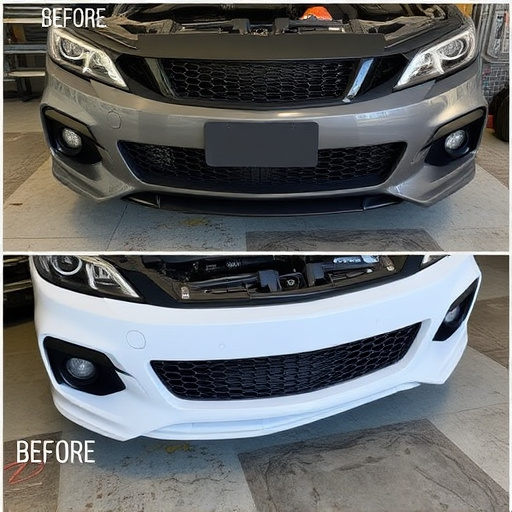
Implementing efficient fleet maintenance protocols for suspenders is a critical aspect of any well-managed transportation operation. By prioritizing regular inspection and prompt repair of suspension systems, businesses can significantly reduce the risk of costly breakdowns and minimize downtime. A structured maintenance program should include routine checks to identify wear and tear, with particular attention to the suspension repair collision aspects that often lead to safety hazards on the road.
This proactive approach involves integrating specialized techniques such as advanced diagnostics, computer-aided alignment, and expert technician training. Utilizing these tools and knowledge ensures that any issues are detected early, preventing minor problems from escalating into major accidents. Moreover, integrating a robust system for tracking maintenance records allows fleet managers to stay ahead of schedule, ensuring all vehicles, from trucks to vans, receive the necessary care. This comprehensive strategy not only extends the lifespan of the suspension systems but also enhances overall vehicle performance and safety, thereby optimizing the efficiency of the entire fleet operation.
Measuring Success: Tracking Repair Efficiency and Cost Savings
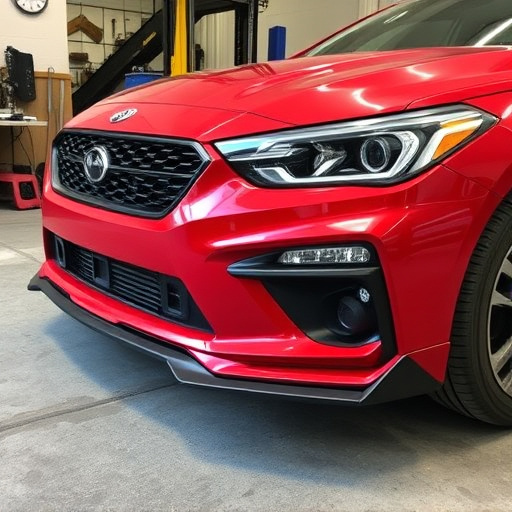
Measuring success in any fleet maintenance program is paramount to ensuring optimal performance and cost-effectiveness. When it comes to suspension repair collision, tracking key metrics provides valuable insights into the efficiency and savings generated by the process. By closely monitoring the time taken for repairs, labor costs, and the frequency of such incidents, fleet managers can identify areas for improvement and make data-driven decisions.
For instance, a well-managed car body shop can demonstrate significant cost savings over time through efficient suspension repair collision services. This includes reducing downtime for vehicles in the garage, minimizing the need for frequent scratch repairs, and ultimately lowering overall maintenance expenses. Such success stories not only enhance the reputation of car repair services but also contribute to the long-term sustainability of fleet operations.
Suspension repair collisions are a significant concern in fleet maintenance, but with the right strategies, these issues can be effectively managed. By understanding the common causes of such accidents, implementing efficient fleet maintenance protocols, and tracking repair efficiency, businesses can minimize downtime and achieve substantial cost savings. Incorporating these practices into your fleet maintenance program is a proactive step towards enhancing safety, ensuring smooth operations, and optimizing overall performance.
